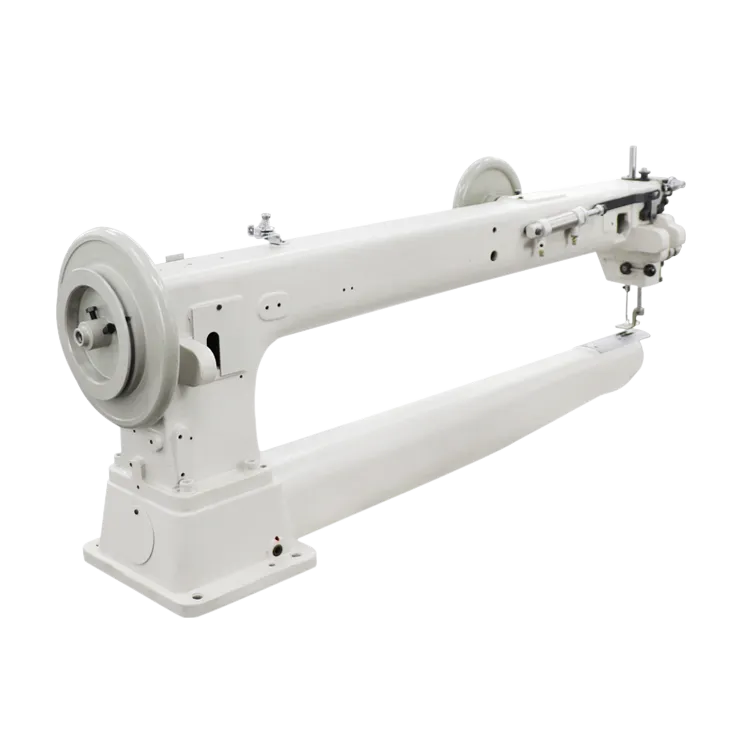what is a serger for
What is a Serger For?
A serger, also known as an overlock machine, is an essential tool in the world of sewing and garment construction. It is designed to create professional-looking finishes on seams and hems, making it an invaluable asset for both hobbyists and professionals alike. Unlike a traditional sewing machine, which uses only one needle and one thread to stitch fabric together, a serger employs multiple threads and specialized needles to achieve a variety of functions that enhance the quality and durability of the sewing project.
Key Functions of a Serger
1. Edge Finishing One of the primary functions of a serger is to finish the edges of fabric. Unfinished edges are prone to fraying, which can compromise the integrity of a garment over time. A serger trims the fabric while simultaneously enclosing the raw edges with thread, preventing fraying and giving the garment a clean, polished appearance. This is especially important for stretchy fabrics, where a properly finished edge can help maintain the fabric's elasticity.
2. Seaming Sergers can sew seams much faster than conventional sewing machines due to their unique design. They can sew and finish seams in one step, saving time and resulting in a stronger seam. The three or four-thread configurations available on many sergers allow for different seam types, catering to various fabrics and project requirements.
3. Rolled Hemming A serger can create rolled hems with ease, which is particularly useful for lightweight fabrics such as chiffon or silk. The rolled hem function creates a narrow, finished edge that doesn't add bulk to the fabric, making it ideal for delicate projects like scarves or table linens.
4. Gathering Some sergers have settings that allow for gathering fabric, which can be used in garments, children’s wear, and home décor items. This feature simplifies the gathering process, saving time and ensuring consistent gathers across multiple pieces of fabric.
5. Creating Flatlock Seams A serger can also produce flatlock seams, which lay flat against the fabric. This type of seam is often used in activewear and swimwear, where comfort and a smooth finish against the skin are paramount. Flatlock seams are both functional and aesthetically pleasing.
what is a serger for

Benefits of Using a Serger
- Speed and Efficiency A serger can significantly speed up the sewing process. It is particularly advantageous when working on multiple garments or larger projects, where finishing seams by hand could be time-consuming.
- Professional Finish The seamless and precise finishes produced by a serger contribute to a professional look that is difficult to achieve with a standard sewing machine. This quality is vital for those looking to sell homemade clothing or create items with a polished appearance.
- Versatility Modern sergers come equipped with a variety of stitch options and settings that can tackle a wide range of fabrics and techniques. From knit fabrics to heavier woven materials, a serger can handle diverse sewing needs.
- Durability The stitches created by a serger are often more robust than traditional sewing machine stitches, which can be particularly important for items that experience a lot of wear and tear.
Conclusion
In conclusion, a serger is an indispensable tool for anyone serious about sewing. Its ability to finish seams, sew quickly, and create professional-quality garments makes it a worthy investment. Whether you are an aspiring fashion designer, a seasoned sewist, or a crafting enthusiast, understanding what a serger is for and how to use it can open up a world of possibilities in your sewing projects. Embracing the capabilities of a serger can elevate your creations from simple to sophisticated, allowing for both creativity and efficiency in your sewing endeavors.
-
Industrial Cylinder Arm Sewing Machine: Revolutionizing Heavy-Duty SewingNewsJul.28,2025
-
Cylinder Arm Sewing Machine: Perfect for Special Sewing ApplicationsNewsJul.28,2025
-
Cylinder Bed Sewing Machine: Essential for Sewing Complex MaterialsNewsJul.28,2025
-
Heavy Duty Sewing Machine: The Essential Tool for Industrial ApplicationsNewsJul.28,2025
-
Computerized Pattern Sewing Machine: Revolutionizing Precision StitchingNewsJul.28,2025
-
Heavy Duty Industrial Sewing Machine: Power Meets PrecisionNewsJul.28,2025
-
Leather Sewing Machine: The Industrial Standard for Tough MaterialsNewsJul.18,2025





























